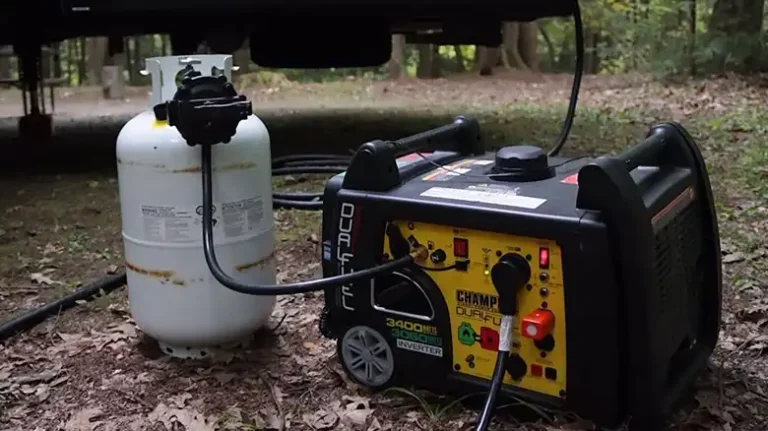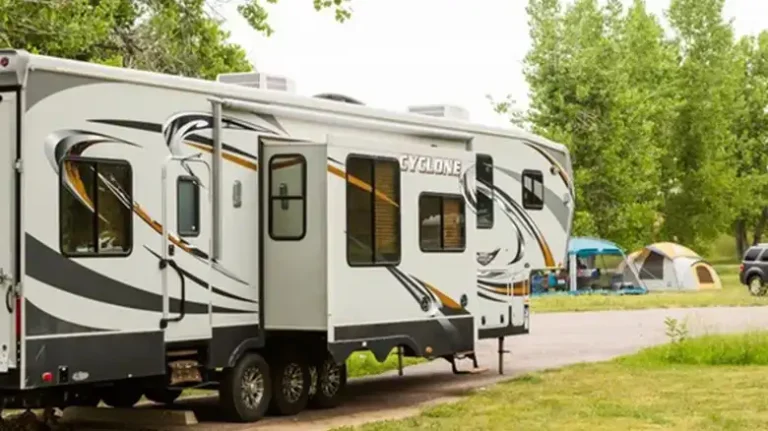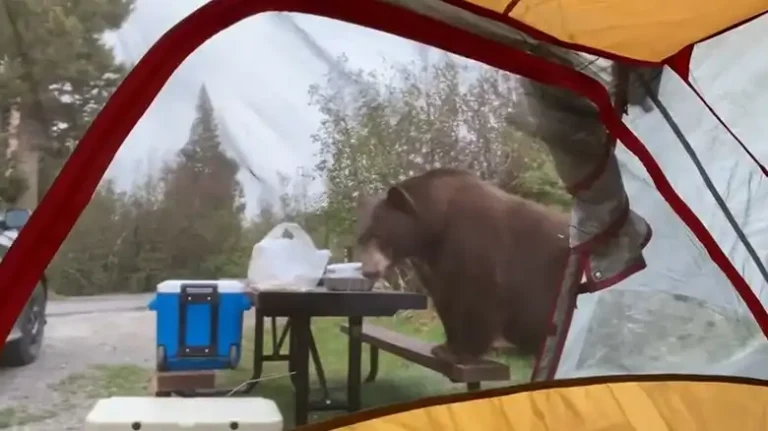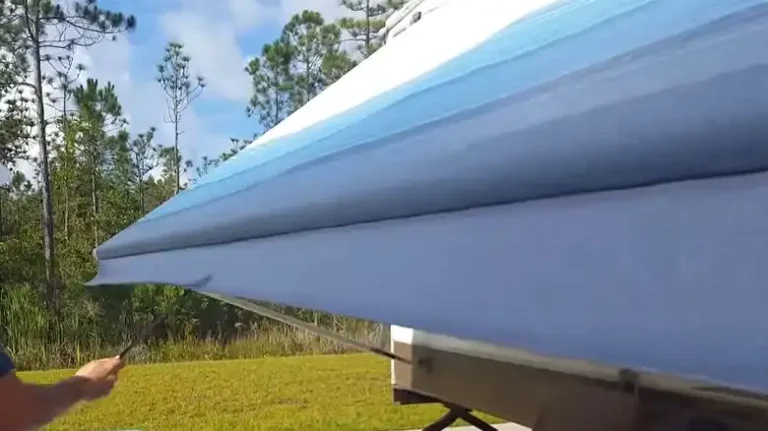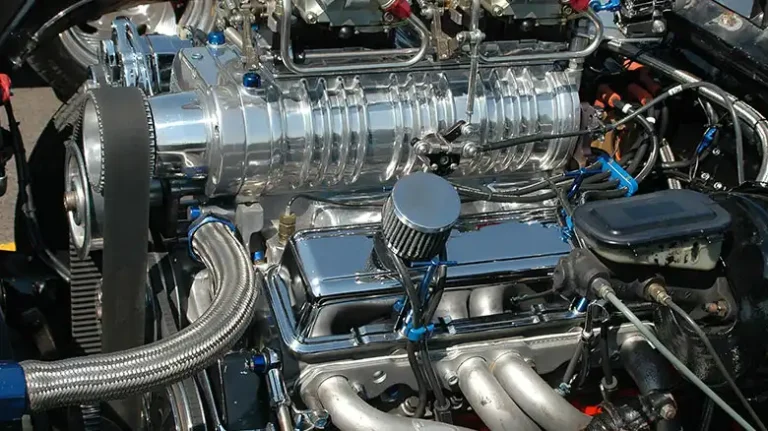Camping Vs Glamping | Key Comparison
Camping and glamping have become increasingly popular ways to vacation and get back to nature. However, the two types of outdoor activities have key differences that may appeal to different people.
Camping involves roughing it out in nature without many creature comforts, while glamping provides resort-style amenities despite being out in the wilderness. Those who love a complete unplug from civilization may prefer camping, but glamping appeals to people wanting more comfort amidst nature.
In this extensive guide, I have discussed all the aspects of traditional camping versus the relatively newer glamping trend. It analyzes the pros and cons, costs, activities, ideal locations, and more to help determine which outdoor activity aligns best with your needs and preferences. After reading, you will have clarity on whether camping or glamping is the ideal choice for your next nature-focused vacation.
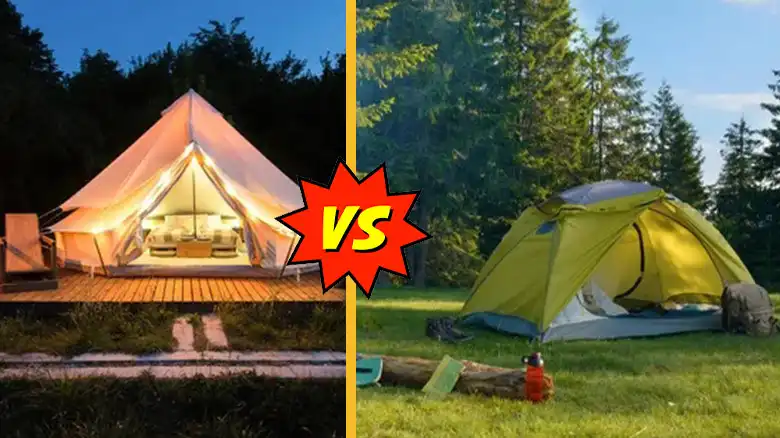
What is Camping?
Camping has been a beloved outdoor activity for over a century. It involves living temporarily in the outdoors, usually in tents or recreational vehicles (RVs). The goal is to disconnect from regular life and connect more deeply with nature through activities like:
- Hiking
- Fishing
- Campfires
- Star gazing
- Cooking over a grill or camp stove
- Canoeing and kayaking
- Wildlife viewing
A key aspect of traditional camping is roughing it without extensive amenities. Campers tend to pack light and make do without electrical outlets, Wi-Fi, running water, bathrooms with plumbing, and resort-style beds. The simplicity allows for more focus on the sights, sounds, and experiences nature has to offer.
Types of Camping
There are a few main types and styles of camping:
- Tent camping: Staying in a simple portable tent, often at designated campsites on public or private land. Ranges from basic car camping to remote backcountry sites.
- RV camping: Staying in a recreational vehicle outfitted with sleeping, cooking, and often bathroom facilities. Typically at campgrounds with electric/water hookups for RVs.
- Backpacking: Hiking to remote areas and carrying camping gear like tents on your back. Requires maximum self-sufficiency.
- Car camping: Drive-up tent camping often at campgrounds with bathrooms/showers. Gear is easily accessible by vehicle.
- Cabins & yurts: Rustic but enclosed overnight shelters found at some campgrounds. Fall between camping & hotel stays.
- Winter camping: Camping in cold weather months, requiring specialized gear for warmth/safety.
So in summary, camping may involve a spectrum of accommodations from simple tents to recreational vehicles, but the ethos remains about forgoing luxury to connect with the outdoors.

What is Glamping?
Glamping is a portmanteau term combining “glamorous” and “camping”. As the name suggests, it involves camping in style with amenities more typical of hotel stays.
The goal of glamping is experiencing nature much like traditional camping, but with resort-style comforts and luxury. Glamping provides services like:
- Luxury tents/yurts/domes with real beds
- Electricity
- Plumbing and flush toilets
- Private bathrooms with showers
- Mini fridges and kitchens
- Food service or restaurants
- Complimentary toiletries
- Fire pits, hammocks, cozy sitting areas
- wifi
Glamping accommodations range from outlandish luxury options like transparent bubbles with hot tubs under the stars to more accessible cabins and fully equipped tents. It allows people who may not rough it well to still enjoy camping perks like beautiful sites, campfires under the stars, and nature immersion.
Common types of glamping shelters and structures include:
- Fully outfitted safari-style tents
- Yurts (sturdy circular tents from Central Asia)
- Rustic but amenity-filled cabins
- Treehouses or pods nestled in natural nooks
- Geodesic domes
- Luxury RVs (as opposed to stripped down camper vans)
- Safari tents (camplike tents on raised platforms with real beds & furniture inside)
So in essence, “glamping provides boutique, hotel-style accommodations in remote areas devoid of modern civilization and infrastructure.” This allows guests to focus more on the joy of camping rather than hooking up propane tanks or schlepping gear.
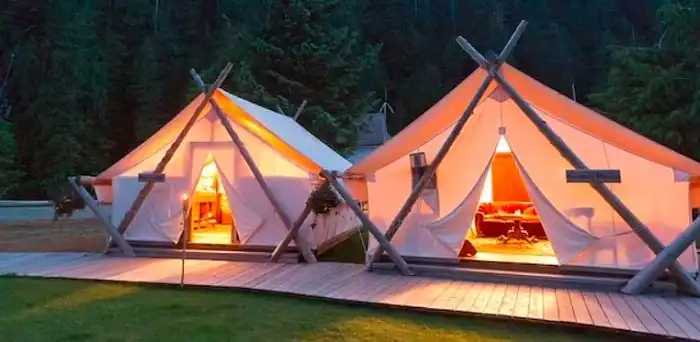
Key Differences Between Camping & Glamping
Now that we’ve covered definitions of traditional camping and the newer glamping movement, let’s analyze some major points of distinction:
Amenities & Accommodations
Glamping prioritizes creature comforts through:
- Plumbing/electricity
- Private bathrooms
- Showers
- King beds rather than sleeping bags
- Provides breakfasts and sometimes gourmet meals
- May have WiFi & TVs
Whereas camping is about forgoing amenities and connecting simply with nature by:
- Sleeping in tents or just beds/cots
- Outdoor composting toilets
- Heating food over grills/camp stoves
- Fetching water from pumps/streams
- Sitting around the campfire instead of bingeing shows
- Disconnecting from WiFi and cell service
Style of Shelter
Camping utilizes portable, exposed shelters like:
- Dome tents
- Pop up canvas tents
- Barebones popup campers
- Backpacking tents
Glamping provides permanent luxury structures like:
- Safari tents on wooden platforms
- Yurts (sturdy circular tent dwellings)
- Well-decorated cabins
- Pods or spherical tree tents
- Tricked out RVs that are like homes-on-wheels
Proximity to Nature
Camping and glamping typically share beautiful nature locations with stunning scenery and opportunities to view wildlife. Both allow connecting deeply with the great outdoors.
However, some ultra-luxe glamping resorts have so many amenities (like restaurants and pools) that the sheltered glamping sites feel less immersively natural than a typical campground. However the amenities allow accessibility for people unable or unwilling to rough it.
Price and Costs
Camping costs much less than glamping on average since you bring your own gear and stay at inexpensive campsites with few frills. Government-run campgrounds charge as low as $10-25 per night for a site. Free options like boondocking on public lands or backcountry camping have no nightly rate.
Glamping costs many times more, although it varies based on amenities. The nightly rates average $200-800 compared to typical hotel costs. The higher price reflects resort perks, luxury structures, and remote locations. Yet glamping in a standard safari tent can cost little more than a hotel.
Reservations Ease
Campsites at popular national/state park campgrounds book out 6-12 months early. Competing for cancellations often leads to striking out. Backcountry permits also book quickly.
Glamping availability remains abundant even shortly before travel since the sites cost much more. Booking a luxe yurt or cabin 1-2 months in advance is totally feasible.
Difference Table
Here is a quick list of differences between camping and glamping:
| Camping | Glamping | |
| Accommodations | Tents, simple cabins, recreational vehicles | Fully outfitted luxury tents, yurts, treehouses, tricked out RVs |
| Amenities | None; roughing it | Electricity, plumbing, Wifi, bathrooms, showers, meals |
| Gear Required | Must pack everything yourself | Structures fully outfitted with bedding, furniture, lighting |
| Cost | Cheap; $25-50 per night typically | Expensive resort prices of $200-500 per night |
| Location | Public lands away from civilization | Resorts, lodges, campgrounds in nature |
| Ideal For | Adventurers seeking challenge | Families and novice campers wary of roughing it |
| Reservations | Books out months ahead | More availability than campsites |
| Connectivity | Unplugged, disconnected | Can access Wifi/cellular service |
| Convenience | DIY setup/meal prep required | Turnkey setup; meals often included |
| Sustainability | Low-impact done properly | Still uses substantial resources |
Ideal Locations for Each
Camping and glamping each shine in certain locations. Here are some top trip types aligned with each outdoor activity style:
Top Camping Destinations
- National parks for tent camping when seeking epic nature views — Yellowstone, Glacier, Tetons, Yosemite Valley, Zion, Grand Canyon, etc. Arrive early or reserve way ahead.
- State parks or national forest campgrounds offer easily accessible camping with fewer crowds and almost as much beauty as national parks for less cost.
- Remote public lands like America’s BLM land for RV trips and boondocking freedom. Vast wide-open spaces.
- Adventure destinations like mountain towns (Denver, Asheville), Pacific Northwest, Montana lakes region, and Maine woods where campgrounds abound.
- Music festivals and events where camping grounds provide cheap event housing — Coachella, Stagecoach, Bonnaroo, festivals across the U.S. Easy to meet fellow fans.
Top Glamping Destinations
- National and state park resorts/lodges offer glamping options alongside the iconic sites tourists have flocked to for over a century. Think Grand Canyon cabins, Death Valley pioneer tent cottages, and CA state park cabins along the coast. More availability than campsites.
- Luxe adult glamping resorts focused on relaxation provide pampering amenities akin to destination spas combined with natural beauty without roughing it too much –fjord tipis in Norway, Mongolian yurt villages, bubble tent Swiss Alps. Lots of couples trips.
- Dude ranches and wilderness lodges cobble together the frontier spirit of camp life with creature comforts. Common in Western U.S. ranching countries like Montana and Wyoming near the national parks.
- Vineyard/wine region cabins, tents, and yurts combine lush landscapes with sybaritic pleasures. Find these from Napa to the Finger Lakes to pastoral regions internationally.
- East Coast waterfront cottages and tent sites capitalize on the sublime beach/”dwelling by the sea” ambiance without going full-on oceanfront hotel. Chesapeake Bay, Outer Banks, Cape Cod, and Maine coastal regions harbor these. Plentiful lobster bakes.
Camping Vs Clamping: Pros and Cons
Pros of Camping
Camping has many perks over hotel stays when done right. Benefits include
Maximum nature immersion – With fewer walls and being exposed more to sights/sounds of rushing water, rustling trees, and chorusing birds, camping places you directly amidst nature’s wonder. The stars blaze brighter freed from light pollution, sunrises seem more vivid, and wildlife feels less constrained by humanity’s footprint when camping. It feels possible to shed civilized sensations and return to a primal state.
Disconnect to reconnect – Camping provides an opportunity to detach from digital disruptions and the chaos of routine obligations in order to reconnect with self, loved ones, and awe/gratitude for this amazing planet we inhabit. Without TV or the internet as distractions, conversations, and activities feel more intentional.
Adventure mindset – When camping, you submit yourself to the whims of nature and break free of familiar settings/routines. This ignites a spirit of adventure, wonder, and resilience. New surroundings and the unknown prompt a flexible, curious, bold mindset that too much predictability and routine tend to dull.
Affordability – Camping costs vastly less than hotels, especially tent camping. Once you acquire gear like a tent, sleeping bags, camp stove, etc., the trip expenses become quite minimal — just food, gas, permits, and activities. Savings mean more trips, paying down debt faster, or money freed for other goals.
Community ethos – Campgrounds cultivate community bonding, especially between campers but also with like-minded rangers and hosts. Sharing fires, trading travel tips, and directing each other to local gems — camping facilitates camaraderie. You look out for fellow campers too.
Pros of Glamping
Glamping’s advantages counteract many traditional camping challenges while still facilitating outdoor immersion. Benefits include:
Keep creature comforts – Glamping allows people who appreciate amenities like cushy beds, private baths, running water, electricity, and maybe even spa services and meals not to forfeit these while vacationing. Physical limitations need not constrain travel dreams when amenities are accommodated.
Sample camping – Beginner campers tentative to try tents, remote locations or roughing it can test the waters by starting with glamping. It allows dabbling in the camping ethos without too difficult a transition from “civilized” routine and settings. Gateway glamping paves the way for more hardcore camping.
Share nature with groups – The spacious sites and variety of glamping shelter options work better for families, groups of couples/friends, company offsites, and weddings. Avoid cramping other’s styles in close-quarters tents. Catered events are possible too.
Convenience – No need to buy, store, or clean camping gear. Time intensiveness of packing food, gathering firewood/kindling, and hooking up propane tanks gets eliminated. Less prep and time maintaining camp = more time enjoying the destination.
Weatherproofing – Glamping structures withstand rain, snow, and excessive sun far better than tents. Stay warmer and drier amidst the elements. Yurts, pods, and hard-sided units keep climate controlled too, avoiding hot/cold extremes some find health-threatening.
Cons of Camping
Camping isn’t for everyone. Downsides may include:
Requires physical resilience – Not having amenities like running water, bathrooms, electricity or sturdy shelter makes camping harder on those unable to readily adapt to the outdoors and physical discomfort. Sites may reside far from help if issues arise too.
Prep-intensive – Food planning/storage/prep, packing enough water/layers/gear, setting up camp, starting a fire, etc. make camping potentially stressful. Exacerbated by forgetting items — no running to the corner store for supplies if remote. Forgetfulness risks serious problems.
Weather risk – Storms, precipitation flooding tents, excessive heat, or cold means camping conditions may become dangerous or deeply uncomfortable. Evacuation adds further hassle and expense if extreme weather hits the region.
Less privacy – Tents offer minimal sound barriers and communal restrooms mean sharing sinks/toilets with fellow campers. For those requiring more personal space, camping may prove socially taxing after too long.
Restrictive policies – Public lands prohibit stresses like loud music/noise, underage drinking parties, and amplified quiet hours. Campers wanting an uninhibited party atmosphere get stifled. And national park policies severely restrict camping stays to prevent colonizing the coveted campsites.
Cons of Glamping
Glamping isn’t without flaws either. The cons consist of:
Expense – Glamping costs considerably more than tent camping — often on par with hotels. Budget-focused travelers or those wanting to save on vacation costs may find glamping untenable for extended trips. Paying such a premium should provide standout experiences.
Potentially less natural – When glamping sites start seeming almost like resorts with pools, event tents, restaurants, and lots of TripAdvisor-toting tourists shuttled to-and-fro, the harmonizing-with-nature element dwindles. Excessive amenities distract from wilderness splendor.
Weather vulnerability – Storms prove problematic since glamping shelters still remain outdoors, unlike hotels. Torrential rain, lightning, or extreme winds may force abrupt departures or miserable camping if structures withstand the conditions. Mud makes pristine tent floors and surroundings pretty gross too.
Less self-sufficiency – Glamping guests grow overly dependent on someone providing services, fixing issues in bathrooms, replacing supplies, and tending to various resort operations. Camping fosters more grit, resilience, and resourcefulness since you solely troubleshoot challenges.
Separation from local culture & authenticity – Onsite restaurants, tour guides, and concierge desks filter interactions with locals. This form of curated cultural exchange promotes less genuine bonding with communities. Too much glamping insulation prevents organic relationships, understanding, and dialog.
Cost Comparison
Let’s break down typical price points for camping versus glamping to demonstrate the significant cost differences.
Camping Costs
Backpacking & Tent Camping
- Campsite fees: ~$10-30/night tent sites nationally ($0 for backcountry)
- Gear (depreciated per trip): ~$100-$400 for quality tent, bags, pads, stove
- Campground/permit fees: ~$5-50/week, annual park passes $50-100
- Food: $10-30/person per day if cooking bulk basic meals over fire
- Gas – Varies drastically but $100-300 for regional drive-in camping
Total average camping trip cost for 2 people: $100-500 for a 4-7 night trip
RV Camping
- Monthly RV payment/rental: $1000+
- Fuel – 10-20 mpg @ $4/gal means $160-300 per 1000-mile trip
- Hook-up campsite fees: ~$40-100 night
- Food costs about the same as tent camping
- Annual vehicle registration/insurance: $1000+
So a 4-night RV vacation running 1000 miles total = $640-1160 for transportation & lodging
Glamping Costs
- Safari Tents – Often around $200-500/night with max capacities of 4-6 people.
- Total trip price for 2 = $1600-4000 for a 4-night stay
Yurts – Range from $100-550/night generally with max capacity also around 4-6 people.
- Total yurt prices for 2 = $800-2200 for a 4-night trip
Activities To Do While Camping vs. Glamping
Camping and glamping both provide lots of opportunities for fun outdoor activities during the day. Typical options include:
Camping Activities
- Hiking on trails of varying difficulty
- Mountain biking on park roads and singletrack
- Fishing in lakes, rivers, and streams
- Canoeing or kayaking
- Wildlife viewing and birdwatching
- Star gazing at night
- Photography of epic nature views
- Backpacking overnight trips
- Rock climbing, mountaineering, Overlanding
- Visiting notable natural landmarks like giant sequoias
Camping serves as an excellent home base for rugged adventure pursuits ranging from relaxing day hikes to week-long through-hiking epics on long trails. The camping ethos embraces digging deep, journeying farther, and reveling in exhaustion from big days tackling the natural wonders of America’s treasured open spaces.
Glamping Activities
- Guided park tours
- Massages, yoga, spa treatments
- Swimming in pools/hot tubs
- Nice restaurant meals
- Wine tastings
- Horseback riding
- Electric bike riding
- Arts/crafts classes
- Stargazing
- Wildlife safaris
- Live music & entertainment
Glamping locations focus more on providing sensual pleasures, gourmet delicacies, cultural entertainment, wellness activities, and convenient sightseeing. The resort-style amenities set the stage for relaxation and rejuvenation intermixed with light outdoor recreation. Guests may exert themselves minimally if desired.
So in essence, camping facilitates rugged adventure in the elements while glamping promotes lounging comfort with a side of nature splendor.
Family Camping vs. Glamping
Both camping and glamping work well for families looking to vacation together in nature. But key factors may determine which suits your crew better.
Camping with Kids
Parents often introduce children to camping to imprint appreciation for the outdoors. Camping builds self-confidence in kids as they gain wilderness skills, independence from technology, adaptability adjusting to camp routines and environs far different than home. It provides unique bonding opportunities while exploring trails, fishing, gathering firewood, cooking over the fire, playing games, singing songs, and telling stories around the evening campfire. Start with car camping in campgrounds to allow adjusting to the wild gradually. Seek child-friendly destinations like national parks offering ranger-led family programming. Purchase kid-sized camping gear to help little ones embrace getting outside.
The downsides of family camping mainly involve dealing with bored or uncomfortable children not keen to adopt a primitive lifestyle. Toddlers and babies add further complexity negotiating naps amid day hikes and coping with sound/light disruptions after dark. Teenagers miss connections and conquering advanced rapids or peaks poses safety risks. Families may want to gradually work up to remote backpacking trips where challenges compound greatly. Test runs of car camping help determine if family camping gels.
Glamping with Kids
Glamping alleviates many family camping struggles through present amenities keeping kids content like electricity, bathrooms, hot showers, activities, and sometimes even Wifi and pools. Parent relaxation increases without wrestling with tent setup/takedown, meal prep challenges, lack of running water, and baby nap disruptions that compound family camping woes.
Glamping downsides? It often costs way more, doesn’t fully disconnect from modern life, takes adjustment to adapting to shared site proximity with strangers, and still deals with outdoor challenges like wildlife, rain, and extreme weather. Yet with more shelter comforts and entertainment provisions, most kids transition smoothly to the glamping environment for short durations after initial enthusiasm wears off.
Certain regions excel for memorable family glamping like national park resorts with ranger talks, dude ranches rich with activities like horseback riding and fishing, beach cottage communities along the Pacific and Atlantic coasts, and European farm stays exposing visitors to lands more storybook quaint than stateside.
Romantic Camping vs. Glamping
Seeking quality couples time immersed in nature? Both camping and glamping make fantastic romantic getaways. Let’s compare their merits for duo travelers.
Romantic Camping
Camping fuels relationship intimacy through the shared novelty of journeying into the wilderness together away from routine’s dulling effects. Adapting to camp life fosters trust, vulnerability, and laughter stemming from activities foreign to couples’ usual habitats and habits.
Scaling peaks, paddling tranquil waters, whispering hopes and dreams around flickering fires, stargazing shoulders pressed together bagged in a single warm cocoon — camping cultivates romantic memories different from most other couple vacations. Backpacking trips especially isolate duos amid spectacular landscapes that dwarf human dramas and differences.
Downsides involve cramped quarters, dirt, sweat, blisters, sore muscles, and worries about weather/wildlife safety — all romance-dampening issues. Beginner camping couples may want cushier car camping as a gateway.
Romantic Glamping
Glamping provides a halfway point between resort pampering and camping simplicity. Couples enjoy creature comforts like private bathrooms, hot showers, electricity, and comfy beds while nestled in natural splendor — without camping hardships.
Many glamping sites incorporate honeymoon-worthy attributes like outdoor clawfoot hot tubs, hammocks for two, and cozy fire pits made for cuddling under the stars. Safari tents grow more conducive to couples getaways than family-focused yurts and cabins. Lavish amenities set the stage for relaxation and reconnecting without distractions beyond chirping birds and the occasional peeking deer.
Potential downsides mostly center on weather uncertainties like intense summer heat, cold snaps, or stormy conditions. Muddy tent floors and soggy hiking trails definitely damper romance! And chandeliers don’t glow quite as beautifully upon return as glamping shelter interiors after too much wine…
In summary, camping builds resilient bonds tempered by adventure’s adversity while glamping smooths the delicacies of courtship with luxury’s sheen. Both contrast wonderfully with the routine of daily life to rekindle relationship flames.
Accessibility Considerations: Camping vs. Glamping
People with disabilities or physical limitations needn’t avoid outdoors vacations. Both camping and glamping provide certain accommodations and tailoring sites for accessibility. Below covers what to expect.
Accessible Camping Options
Camping capacity scales based on mobility levels. For mild impairment, favor car camping with amenities nearby — federal sites tagged with campground accessibility icons denoting facility access levels. Seek RV sites offering short distances between parking, restrooms and picnic tables if needing level surfaces.
Backcountry camping limits non-ambulatory visitors but utilizes hunting-style blinds when permitted near fishing holes. Track-chair assistive devices empower disabled passage through forests/meadows too.
Adapted recreational gear like single-wheel mountain bikes accommodate mobility variance for riding/hiking trails among nature’s calming wonders. Always call parks beforehand ensuring specific sites and programs welcome those recovering from injury or permanently disabled. Many rangers happily guide visitors in navigating available options.
Accessible Glamping Options
Glamping’s comfort-focused approach offers additional accommodations for visitors managing health issues. Choose sites with:
- Solid flooring if needing smooth, non-jarring surfaces
- Few steps/stairs and wide doorway clearance
- Roll-in showers with bars and seating
- Lowered beds, transfer seating, grab handles
- Restaurant providing healthy menus for dietary needs
Carefully assess sites beforehand determining if sufficient adaptation made for injury/illness. Seek locations actively marketed toward accessibility over assuming any glamping resort handles limitations — convey precise needs through direct contact. Pay the premium prices only with clear guidance of adequate provisions.
Overall, glamping better equips visitors requiring extra mobility/medical assistance — albeit sometimes at the cost of a deeper nature connection. Yet with reasonable adaptations, the glory of the great outdoors welcomes people across the ability spectrum.
Sustainability Comparison: Camping vs. Glamping
Eco-conscious travelers rightfully scrutinize vacation impacts on local environments and communities. How do camping and glamping compare regarding sustainability?
Sustainable Camping
Done properly, camping fosters appreciating nature’s magnificence and interpellates caring ethics toward fragile ecosystems. Knowledgeable campers:
- Contain fires in established rings with responsibly scavenged wood
- Pack out all trash/waste, leaving no trace
- Keep food sealed against wildlife conflicts
- Stay distant from sensitive habitats like bird nesting regions
- Avoid harmful chemical products
Yet heavily trafficked campgrounds increasingly degrade under humanity’s footprint. Expansive RV sites erode soil and forests. Disposable gear purchased new every season for infrequent use piles unnecessary landfill waste. Perhaps rethink driving solo long distances fueled by gas/diesel to occupy appropriated land for recreation temporarily…
Overall ethical camping requires continually evaluating practices through the lens of privilege, consumption impacts, and Native displacement from appropriated “public” lands.
Sustainable Glamping
Glamping locales focus on exclusive experiences so limit guest volumes, preserve remote regions longer, and concentrate impacts within the facilities’ footprint. Safari tents easily move for grounds rehab. Yurts work well in various climates, reused for decades.
Many glamping companies now pursue eco-friendly certifications, renewable energy systems like solar, ethically sourced local building materials, environmentally safe chemical usage, and hyperlocal cuisine. Glamping costs also encourage guests to fully utilize each stay rather than hopscotching the globe scooping superficial selfies at unspoiled locales.
Yet glamping’s luxe lifestyle still exacts weighty environmental costs overall…
Perhaps reflects deeper societal excessive consumption patterns in the microcosm. The occasional glamping indulgence is less concerning than the perpetual pursuits of pampered privilege.
Conscientious glamping means checking green practices plus assessing personal priorities around simpler living. No vacation mode is exempt from frequent self-evaluation when wilderness welfare remains paramount.
Choosing Between Camping & Glamping
Deciding between traditional camping or the more cushy glamping experience means prioritizing:
- Budget – Costs for car/RV camping between $100-500 total while Glamping runs $800+ for a trip
- Desired amenities – Glamping provides electricity, bathrooms, beds; Camping offers campfires, stars, and simplicity
- Preparation tolerance – Glamping requires almost zero gear and planning; Camping takes meal prep, packing equipment, securing permits
- Ideal activities – Camping facilitates rugged pursuits like backpacking, kayaking, mountain biking; Glamping focuses more on relaxation
- Accessibility – Glamping better accommodates disabilities/limitations with sites tailored for assisted mobility
- Group dynamics – Glamping works well for couples/families; Camping suits bold solo adventurers
- Personal comfort – Camping involves physical discomfort; Glamping maximizes luxury
- Ideal locations – Camping belongs in vast wilderness/public lands; Glamping prevails near national park resorts/lodges
Answering these preference points helps determine if camping or glamping becomes the optimal match for your outdoor vacationing needs and style. Most likely the sheer abundance of public lands offering camping will continue popularizing this traditional pastime indefinitely. But glamping paves the way for outdoor immersion among demographics previously disinclined toward braving the wilds devoid of modern conveniences.
Comparing camping and glamping illuminates how wide-ranging lodging options in nature now span the spectrum — from nylon tents and real wilderness to resort-style pampering meets roughing it just enough to still feel a satisfactory connection. Surely options exist enticing anyone to sample nature’s bountiful beauty!

